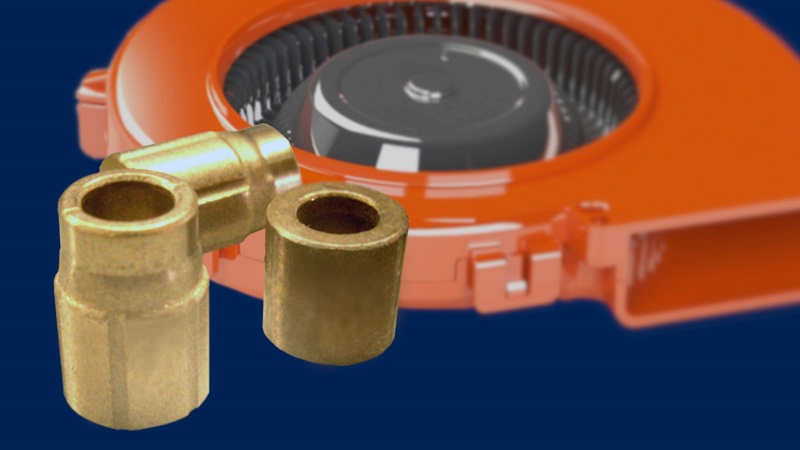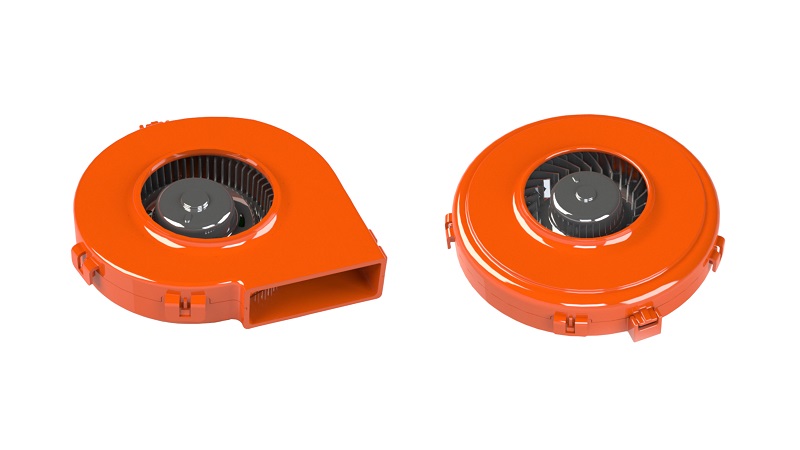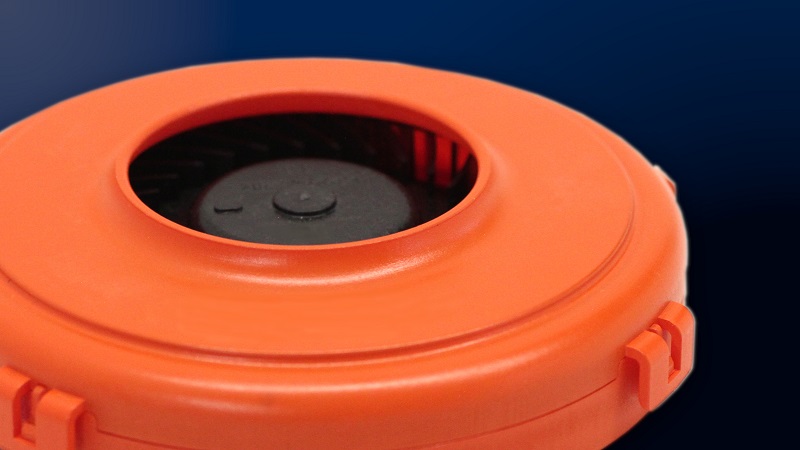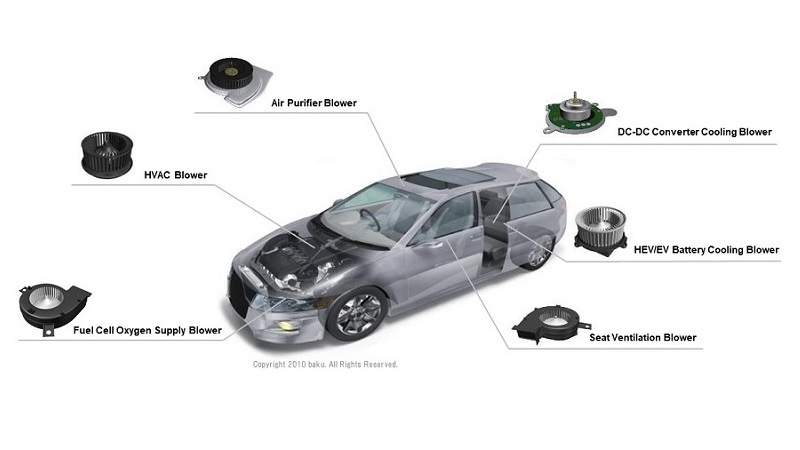Sleeve bearing development surpasses automotive industry standards – Automotive seat ventilation blower motor
-
Automotive
-
Automotive seat ventilation system

Taking on the challenge of developing sleeve bearings that meet noise and durability requirements for the seat ventilation market.
Seat thermal comfort systems, including seat ventilation systems, have become essential features in automobiles. Automotive components such as the blower motors used in these seat ventilation systems have stringent vibration and shock resistance requirements to prevent damage or malfunction caused by the vibrations associated with driving.
ASPINA embarked on a pioneering development project for seat ventilation blower motors back in 2002. In our quest to create a seat ventilation blower motor that is not only quiet and durable but also meets the exacting standards of automotive OEMs, our project engineers honed in on a critical component of the motor: the bearing. Central to our discussions was the pivotal decision of whether to opt for ball bearings or sleeve bearings.
Most seat ventilation blower motors currently available in the market employ ball bearings. This is because ball bearings are easy to handle and do not require specialized knowledge for adoption. However, small-diameter ball bearings, typical of those used in seat ventilation blower motors, introduce a considerable risk of causing noise and pose challenges in assuring quality. They are susceptible to damage on both inner and ball surfaces from impacts, resulting in noise when they come into contact during rotation.
Understanding the importance of vibration and shock resistance in automotive components, ASPINA’s project engineers, with a particular focus on seat ventilation blower motors, recognized the significance of noise reduction. These motors operate in close proximity to passengers' ears, making noise reduction essential for a comfortable and enjoyable driving experience. Consequently, our engineers made the audacious decision to tackle the challenge of developing a more durable, quieter, and cost-effective sleeve bearing solution for our seat ventilation blower motor.
Optimal lubricant oil selection for stable sleeve bearing operation across temperature variations
Sleeve bearings are molded from sintered metal and have an interconnecting porous structure. This sintered metal is impregnated with lubricating oil, which is stored in the pores. When the shaft rotates, the oil is supplied from the pores, forming an oil film between the shaft and the bearing. This oil film serves as a crucial barrier, preventing direct contact between the two components.
 Structure and mechanism of a sleeve bearing
Structure and mechanism of a sleeve bearing
When subjected to impacts, sleeve bearings efficiently distribute the load across the rotor shaft's surface. This effectively disperses vibrations and shocks, safeguarding both the inner surface of the bearing and the rotor shaft itself, consequently reducing the generation of noise.
Comparing sleeve bearings to their ball bearing counterparts reveal several key advantages:
- 1. Quiet operation and resilience to vibration/shock
- Sleeve bearings, as previously mentioned, excel in dampening vibration and shock due to their load-bearing design. For this reason, they exhibit remarkably low friction noise during operation, making them well-suited for stringent reliability tests mandatory in automotive applications.
- 2. Enhanced design flexibility
- In contrast to off-the-shelf ball bearings, sleeve bearings have the potential for a wide variety of specifications, and therefore are not usually sold off-the-shelf but designed exclusively for each application. This means sleeve bearings can be tailor-made to meet specific application requirements, accommodating variations in bearing, motor, and blower casing shapes. This adaptability facilitates the creation of compact, low-profile seat ventilation blower motors, which are aligned with customer demands.
- 3. Cost efficiency
- Sleeve bearings have a lower unit price compared to ball bearings. This cost advantage contributes to the overall competitiveness of seat ventilation blower motors within the increasingly commoditized seat thermal comfort market.
| Bearing type | Resilience to vibration/shock | Quiet operation |
Design flexibility |
Cost efficiency |
|---|---|---|---|---|
|
Sleeve bearing  |
High | Superior | High | High |
| Vibration/shock can be dampened by bearing design | Less susceptible to inner surface damage that is the cause of noise | Can be tailor-made to meet specific application requirements | Lower unit price | |
|
Ball bearing  |
Low | Inferior | Low | Low |
| Inner and ball surface are susceptible to damage from vibration/shock | Susceptible to inner and ball surface damage that results in noise | Usually sold off-the-shelf | Higher unit price |
However, the successful adoption of sleeve bearings hinges upon the careful selection of lubricant oil. The viscosity of the oil embedded within the sintered metal exhibits distinct behavior in response to temperature variations. In colder environments, the oil's viscosity tends to increase, potentially hindering the formation of the vital lubricating oil film and leading to unwanted noise. Conversely, in high-temperature conditions, excessive reduction in viscosity can weaken the oil film, potentially causing the bearing to seize*.
-
*Bearing seizure occurs when bearings overheat during rotation, causing metals to melt and fuse together.
Choosing lubricant oil with minimal viscosity changes across diverse temperature ranges might seem advantageous initially. However, it's essential to note that oil film formation is significantly influenced by additives. Therefore, relying solely on the viscosity index for evaluation can be misleading.
For example the graph below shows that oil 3 and 4 have the least viscosity change across temperatures and seems fit for use in our blower motor bearing. However, we can see from the table below that blower motors with sleeve bearings using oil 3 and 4 creates noise when started-up at low temperature after going through a high temperature endurance test.
 Oil viscosity range from -40°C to 100°C
Oil viscosity range from -40°C to 100°C
| Oil type | Test time [h] | Start up noise at -40°C |
|---|---|---|
| Oil 1 used in ASPINA's seat ventilation blower |
586 | No noise |
| Oil 2 | 24 | Noise occurence |
| Oil 3 | 240 | Noise occurence |
| Oil 4 | 0 | Noise occurence |
ASPINA's project engineers undertook rigorous experimentation to address this complex issue. Through persistent efforts and countless iterations, they successfully identified the optimal oil with minimal viscosity variations and excellent additive compatibility (namely oil 1 from the graph/table above). This achievement empowered ASPINA's engineering team to develop a seat ventilation blower motor that is not only quiet but also highly durable, effectively surmounting the challenges associated with sleeve bearings.
Unlocking the potential of sleeve bearings: Leveraging decades of experience and dedication
The decision to explore the possibilities of sleeve bearings in our seat ventilation blower motor development project was rooted in ASPINA's rich technical expertise and decades of experience, particularly derived from our involvement in the audio equipment business. ASPINA entered the motor industry back in 1962, with a primary focus on audio equipment. During this period, we diligently cultivated technology aimed at enhancing rotor shaft precision. This precision was imperative to minimize mechanical noise and rotational irregularities for a smooth and silent audio equipment operation, preserving the purity of music playback. When our engineers embarked on the development of the seat ventilation blower motor, they specifically drew from ASPINA’s extensive knowledge of small-diameter sleeve bearings used in CD-ROM drive motors, as evidenced in earlier discussions regarding lubricant oil selection.
In the pursuit of further extending the lifespan of the seat ventilation blower motor during the product development phase, our engineering team made the decision to change the bearing material. Unexpectedly, this change introduced an issue previously unencountered: bearing seizing. Despite conducting numerous tests with a variety of parameters and amassing a wealth of data, the root cause remained elusive. It was during this challenging period that one of our project engineers offered a valuable insight: “the key to solving an issue is sometimes hidden within the failures”.
With a fresh perspective, our project engineers revisited their test results and discerned a recurring pattern-- the seizing consistently occurred in a specific region of the bearing. ASPINA then engaged in collaborative efforts with the bearing manufacturer to delve deeper into this phenomenon. The joint investigation revealed that the seizing problem stemmed from high surface pressure in a particular area between the shaft and the bearing, resulting in inadequate oil film formation. Working in close partnership with the bearing manufacturer, our engineers devised a solution of applying special machining to the inner diameter of the bearing. This innovative approach alleviated the pressure on specific areas during operation, effectively resolving the seizing issue.
The journey of harnessing the full potential of sleeve bearings underscores that their implementation demands a substantial reservoir of experience and expertise. Sleeve bearings are not a plug-and-play solution but rather a sophisticated component that requires careful consideration. Nevertheless, ASPINA's success in developing a vibration/shock-resistant and whisper-quiet seat ventilation blower motor was made possible through the accumulation of knowledge over the decades, a dedicated team of engineers unafraid of confronting challenges head-on, and robust collaborations with our component suppliers.
Setting the industry standard: ASPINA’s high-quality seat ventilation blower motors approach 100 million cumulative shipments with zero warranty returns.
Our motors represent a compelling combination of superior quality and cost-effectiveness, making them the preferred choice for automotive OEMs. Our cumulative shipments approach the impressive milestone of 100 million units. What sets ASPINA apart is not just the sheer quantity but the unmatched quality we deliver, demonstrated with our zero warranty returns.
Small-diameter sleeve bearings represent a groundbreaking technological advancement with the capacity to deliver top-tier, cost-effective seat ventilation blower motors. At the forefront of this revolution stands ASPINA, a pioneering force in providing these innovative blower motors to over 10 leading global automotive OEMs. Our journey has been defined by resounding market success. ASPINA's leadership is underscored by our unwavering commitment to solving the inherent challenges associated with sleeve bearings. These include mitigating noise in low-temperature environments and preventing seizing in high-temperature conditions. Through dedicated research and innovative solutions, we have established ourselves as trailblazers in the industry, and will continue to elevate our standing in the competitive seat ventilation blower motor market.
Related information
-
Seat ventilation blower
Products & services

-
Casing structure innovation provides quiet and comfortable driving experience – Automotive seat ventilation blower motor
Technologies

-
Compact and high performance seat ventilation systems made possible with back outlet blower motor
Case studies

-
Accelerate product development: Rapid sampling and tailored solutions with ASPINA’s seat ventilation blowers
Case studies

Exhibition information
-
Jul. 9, 2025
-
May 19, 2025
-
Dec. 27, 2024










